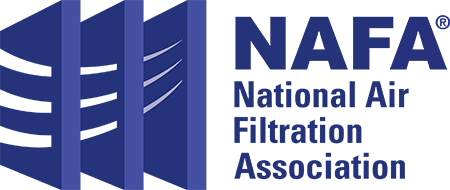Guidance for Dealing with Wildfire Smoke
The frequency of wildfires and the range of their impact is on the increase. What has often been considered a west coast phenomenon made its presence felt on the east coast starting the week of June 4th, 2023, when the prevailing wind patterns brought wildfire smoke down from Canada as far south as the Carolinas.
Some of the consequences of wildfires include a reduction in the quality of both indoor and outdoor air, a reduction in water quality, public health issues that are more acute for those with asthma and other pre-existing medical issues, damage to the ecosystem, and negative economic impact to local economies.
Many communities are exposed to wildfire smoke for days, weeks, or even months at a time. The smoke can easily enter the indoor environment through natural ventilation, infiltration, and mechanical ventilation. The primary contaminant of wildfire smoke is particulate matter. Wildfire smoke can contain up to 90% of PM2.5. In addition to the particulate matter, wildfire smoke contains gas-phase contaminants such as ozone, sulfur dioxide, carbon monoxide, carbon dioxide, and volatile organic compounds.
Most public health guidance over the last five years advises staying indoors and closing all windows and doors during a wildfire event. In 2020, the EPA worked with the National Institute of Standards and Technology (NIST) to propose that the American Society of Heating, Refrigeration, and Air Conditioning Engineers (ASHRAE) develop a wildfire smoke guideline.
This guideline was released in February 2021 and it focuses on reducing fine particle (PM2.5) exposures from smoke in commercial buildings, schools, healthcare facilities, multi-unit residential structures, and similar buildings.
Based on this guidance, there are steps that can and should be taken in advance of a wildfire event. These steps include, but are not limited to the following:
- Buying supplies early (filters and portable air cleaners)
- Evaluating your HVAC system to determine if it can handle a higher efficiency filter
- Reviewing the building envelope, weatherizing it, and sealing it as needed
- Conducting a full maintenance check on the HVAC system and making repairs as needed
- Checking for the ability to reduce the outdoor air volume while maintaining positive pressure
- Investigating the addition of supplemental filtration at intakes or in the occupied spaces
- Consulting a qualified HVAC professional where necessary
- Installing air monitors with a PM5 sensor and pressure sensors
Once a wildfire event begins, there are an equal number of actions to take. The actions to take during an event include:
- Maintaining supplies (filters and portable air cleaners)
- Conducting frequent maintenance checks on the HVAC systems and all filters
- Limiting outdoor air intake while maintaining adequate air flow to maintain positive pressure
- Adding supplemental filtration where possible
- Utilizing MERV 13 or higher filters
- Utilizing combination particulate/gas-phase filters
- Monitor the PM2.5 concentration in the occupied areas of a building and/or at air intakes
- Use differential pressure sensors to measure the pressure difference between the building interior and the outdoor air
- Add portable air cleaners with HEPA filters as needed
If portable air cleaners are used, make sure that the air cleaner is rated by The Association of Home Appliance Manufacturers (AHAM). Units with a sufficient smoke clean air delivery rate (CADR), sized for the application, and with low noise ratings are recommended. For wildfire smoke, AHAM updated their sizing recommendation to a smoke CADR equal to the size of the room in square feet from the 2/3 the room area rule of thumb. Keep in mind that multiple air cleaners may be needed for larger rooms. Additional information on the selection and use of portable air cleaners can be found on the Environmental Protection Agency (EPA) website.
The time to act is before a wildfire event occurs. Ensure that you have a smoke readiness plan before you need one. Utilize sources such as weather websites and fire.airnow.gov for tracking wildfire events, smoke patterns, and the Air Quality Index (AQI). Use these sources to help determine when you should enact your smoke readiness plan. Additional information and guidance can be found on the NAFA, EPA, and ASHRAE websites.
Author: Dave Schaaf
